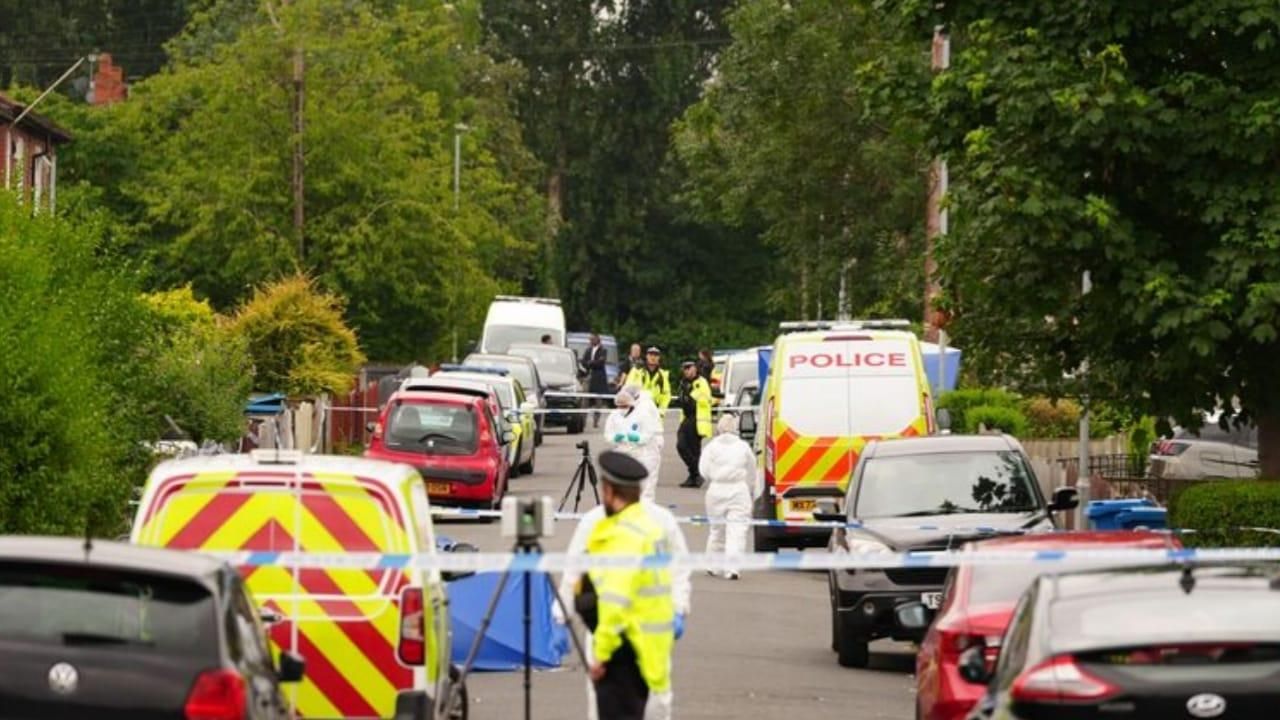The military pickup vehicle speeds up as it breaks through a field of trees and heads towards a Ukrainian mortar position that is located roughly 0.5 miles from the Russian border.
The threat posed by Russian drones, according to a soldier seated in the back with a Sky News crew, necessitates the additional speed.
Once more beneath the shelter of the forest, the car slows down a little as it bumps over a dirt track and enters a clearing that is still shadowed by branches that hang over the edge, providing a natural barrier against any onlookers or aerial bombs.
A mortar team, led by a commander called Junior Lieutenant Dmytro, emerges from a makeshift shelter, dug into the earth.
They say their mission on the Ukrainian side of the border in Sumy region has transformed since Ukraine invaded Russia almost two weeks ago.
Instead of firing mortar rounds to defend their territory from the threat of a new Russian assault, they are now striking targets inside Russia's Kursk region to support Ukrainian forces pushing forward on the ground.
The switch in focus has been a major boost for the soldiers of 117th Separate Brigade, part of Ukraine's Territorial Defence.
Like most of the rest of the country - and the world - they had not been aware of Kyiv's invasion plan until it happened on 6 August, but are now proud to be part of the mission.
"With this brilliant operation and seeing how much enemy territory we've occupied, I can't say I'm happy just yet - as I'll be happy when the war ends - but for now, I'm glad and hopeful," Dmytro, who is 45 years old, adds.
He and his guys jog to their mortar, which is a few dozen meters distant through the trees, after being assigned a new position to attack on the Russian side of the border.
They try to minimise time above ground to avoid being spotted by the other side.
The weapon, which fires 120mm shells, is kept at the bottom of a specially built trench.
The troops have constructed two camouflage shutters over the top of the hole to hide the system. They open the flaps only to fire it - then quickly close them again.
We watch as they wait for the coordinates of the target.
Suddenly, the team is alerted to a Russian surveillance drone overhead.
We are told to rush inside a shelter, which forms part of the mortar trench.
After a few minutes, it is deemed safe to emerge but almost immediately an FPV (first person view) drone is spotted and we have to hide again.
In total, they launch five mortar rounds into Kursk region before hiding away the mortar once more and sprinting back to their main shelter.
Racing down wooden steps into an underground room, lined with bunk beds, the soldiers say we all need to stay hidden as a Russian drone is back above us, looking for the firing position.
While they wait, one of the team pulls out his phone and shows us footage from one of their drones of the mortar rounds they had just fired landing on a Russian position.








.svg)



